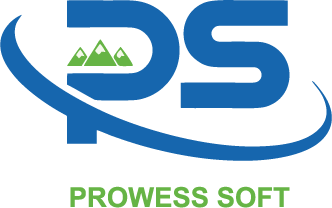Blogs
MuleSoft Best Practices for Project Implementation – Part I: Laying the Foundation for Success
- November 21, 2023
- MuleSoft
Project success is a pursuit that every organization, big or small, strives for. The journey from ideation to execution is filled with challenges, and one misstep can have far-reaching consequences. It’s a familiar story for anyone who has embarked on a project, whether minor or major. The careful strategy and planning can easily crumble when sub-par implementations come into play. The key to success isn’t always in monumental changes; sometimes, it’s about perfecting the details. In the world of project implementation, small doesn’t mean insignificant. As Michelangelo famously said, “Trifles make a man perfect, but Perfection is no trifle.” These trifles, often referred to as “Best Practices,” when meticulously followed by “Good Implementers,” can be powerful catalysts in the quest for project success. This blog unfolds in two parts, and in this first installment, we will explore the foundational best practices that lay the groundwork for a successful project, specifically focusing on MuleSoft projects.
1. Define Life Cycles and Milestones
Success begins with a plan, and this holds true for any project, including those involving MuleSoft partners. Proper planning and the definition of milestones are the cornerstones of a successful journey. It’s a roadmap that provides visibility for a long-term implementation. The goal is to reduce maintenance costs and enhance overall project visibility.
2. Product vs. Project Mindset
Source: https://www.sketchbubble.com/en/presentation-project-mindset-vs-product-mindset.html
The shift from a project mindset to a product mindset is instrumental in leveraging the full potential of MuleSoft and APIs. Research firm Gartner emphasizes the role of APIs in making digital society and digital business work by connecting people, businesses, and things. APIs are more than mere project components; they are essential for creating new digital products, business models, and channels. Organizations that treat APIs as products with an entire lifecycle and a long-term roadmap recognize their potential value as business accelerators. The product mindset emphasizes designing and delivering APIs for long-term value at scale and adapting them to changing customer needs. This approach contrasts with treating APIs as one-time projects or several discrete projects, which often limit their extensibility, longevity, and reach. Designing APIs with a product mindset prioritizes ease of consumption, making it easier for developers to leverage APIs in new and innovative ways. It also reduces the risk of being locked into specific use cases, strategies, or business models, ensuring adaptability and scalability.
3. SOUND DESIGN
A solid design forms the bedrock of great implementations. MuleSoft Support Services endorses the Design-First Approach, with the Restful API Modelling Language (RAML) playing a pivotal role. This approach encompasses various components such as traits, resource types, security schemes, and more, which facilitate the creation of robust, reusable code. Better code readability and reusability are always superior, as they promote modular code and minimize redundant APIs. Publishing these resources to an exchange simplifies the discovery of APIs, reducing the effort required to reinvent the wheel.
4. PROPER NAMING CONVENTIONS
Establishing and adhering to appropriate naming conventions is one of the fundamental steps in best practices. Naming conventions are vital for ensuring APIs’ usability, maintainability, and scalability. These conventions provide a common language and structure for developers. Some key rules include using nouns, preferably in plurals, for naming resources, avoiding unnecessary nesting of resources, separating words with hyphens, using forward slashes to denote hierarchy, avoiding special characters, and maintaining consistent casing styles.
5. USING GLOBAL ERROR HANDLER
In the complex world of APIs, errors and exceptions are inevitable. To maintain trust in the API ecosystem, it’s essential to have a reliable and uniform error-handling framework. Consistency in behaviour is crucial, and a common error-handling framework goes a long way in achieving this. It instils confidence in API consumers, assuring them that, regardless of the error’s nature, APIs will consistently behave as expected. The MuleSoft platform provides a potent error-handling framework that effectively manages a multitude of error situations. This not only simplifies error debugging but also streamlines the identification of root causes, leading to quicker issue resolution. Additionally, a Global Error Handler enhances reusability, a valuable asset in the world of APIs.
6. USING PROPER LOGGING
Logging and error handling go hand in hand. They form a crucial partnership in the API ecosystem. A robust logging strategy, when combined with a well-defined error-handling framework, simplifies the lives of support functions responsible for the API ecosystem’s well-being. Effective logging is essential in understanding an API’s behavior. It’s worth noting that an API’s lifecycle begins when it goes live and becomes operational. Support staff should be able to rely on logs to assess how the API is performing. However, it’s important to strike a balance when it comes to logging. Excessive logging can lead to information overload and hinder efficient issue resolution. The key is to log more than just basic entry and exit points, providing sufficient information for assessment while avoiding information overload.
7. HAVING A PROPER API GOVERNANCE MECHANISM
Establishing a robust API governance mechanism is crucial for maintaining consistency and reliability throughout the API development and maintenance process. Governance ensures that APIs adhere to best practices and meet organizational standards. It plays a pivotal role in safeguarding the quality, security, and performance of APIs. In the below video, discover how MuleSoft’s latest Anypoint API Governance can enhance your organization’s API quality by empowering you to recognize conformance issues and initiate measures for their resolution.
The Way Forward
In the next part of this blog series, we will uncover an array of advanced best practices essential for a seamless MuleSoft project implementation. These practices will equip you with the tools and insights needed to navigate the intricate world of APIs and project implementation. Unlock the full spectrum of MuleSoft’s capabilities, ensuring not just success but excellence in the execution of your projects. Your journey to MuleSoft Implementation Services mastery continues, and we’re excited to guide you through the next level of expertise.


